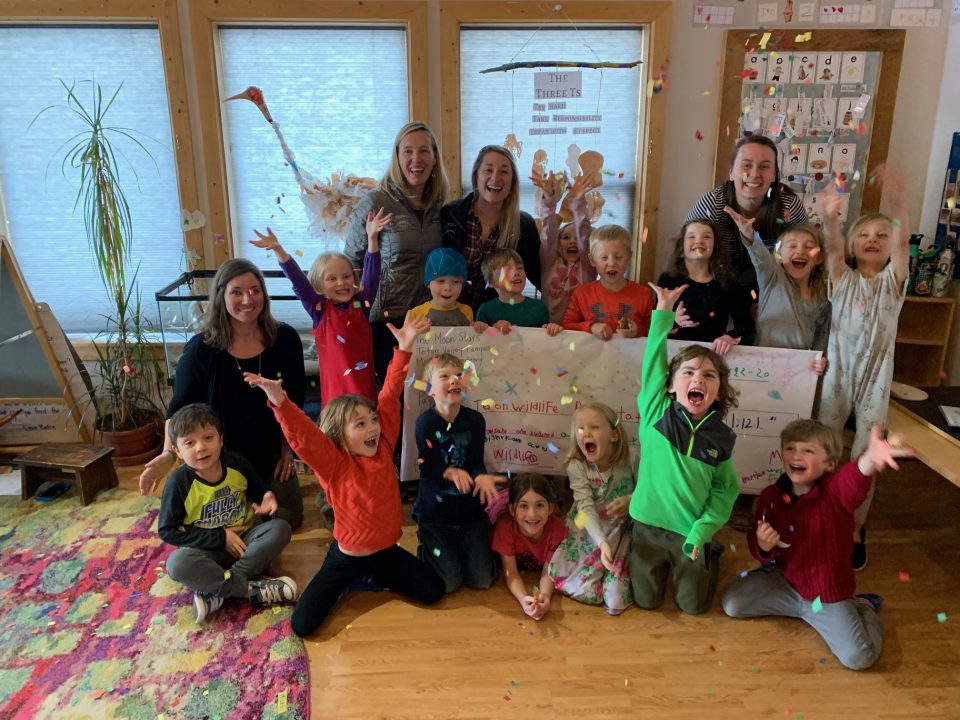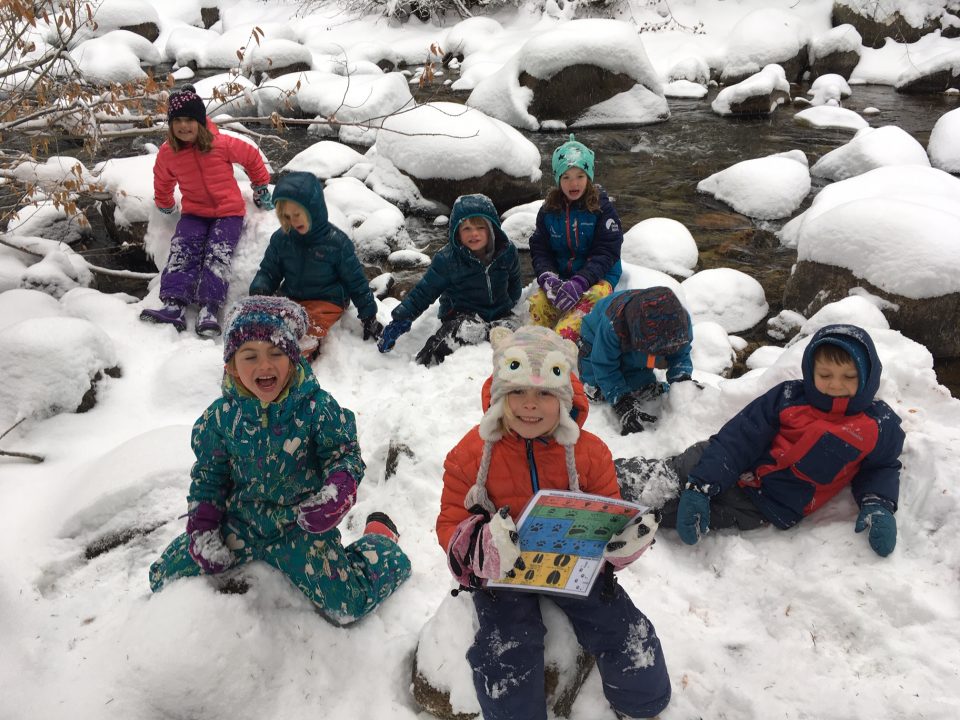Driving Question
K through 1st
What PBE Principles were highlighted in this project?
Community as Classroom, Learner-Centered, Design Thinking, Inquiry-Based, Interdisciplinary
Project Description
The GYE Wild Animal project touched on several aspects of our yearlong curriculum including topics in; math, literacy, writing, science, and social studies. This project was built around foundational outcomes rooted in academic engagement, community connection, and character development. This second project of the year served as a great opportunity to continue to practice group decision-making, collaborative work, and effective communication. The Moon Stars continued to grow closer to one another through this work while expanding their individual senses of place outwards into our local ecosystem and community.
The Moon Stars each completed a non-fiction research mini-project within this project, giving them exposure to a non-fiction research library that we worked together to pull from our school library. Scientific inquiry was a major part of this work, and students were asked to be resourceful in finding answers to their own questions. As with all scientific inquiry – this newfound information only led to more questions that the Moon Stars were eager to explore!
This project allowed the Moon Stars to inspect the non-human components of our local Teton Valley community and learn more about our animal counterparts. We loved learning about how animals deal with the tough conditions associated with our local ecosystem and related these adaptations to our own human behavior. To wrap up this project the Moon Stars completed an act of service to our community, and to the animals, by creating and selling stickers to spread the word about wildlife road crossings. We raised a significant amount of money (over $1,000!) for the Teton Wildlife Rehabilitation Center, which was a proud moment for the Moon stars!
How did this positively impact community? How was it shared?
We were able to donate over $1,000 to a local non-profit that works directly with local wild animals that are impacted by human life – mainly roadways that intersect their migration routes. Students created and sold stickers to raise money, and then invited the founders of Teton Wildlife Rehabilitation Center to our class for a surprise presentation of the money. This presentation happened at school, in front of parents and our entire school student body. The Moon Stars presented the money in the form of a big check, shared what they had learned throughout the project, and threw confetti!

Reflection
The biggest challenge during this project was the portion where students completed independent research projects. This is difficult work for emergent readers, and lots of teacher support was necessary to make this exercise worthwhile. Although challenging, this was a great opportunity for students to be exposed to non-fiction texts and the process of inquiry/research.
The most rewarding aspect of this project was seeing how excited students were to donate money to a cause of their choice. They were thoroughly thrilled! The most rewarding part for me as a teacher was having a letter to the editor published in High Country News. It was amazing to share my student’s work with that population.
If I could give any words of wisdom to first-time PBE/PBL teachers, it’s that PBL and PBE must be truly student guided in order to make learning meaningful. When my students told me that they wanted to “help animals” at the start of this project, I had NO idea how we would make that happen. After months of inquiry and inviting local experts into our classroom, their collective ideas evolved and the idea for sticker sales was born. I would have never thought of this on my own, and because it was student-driven the outcome was much more meaningful for my students.


